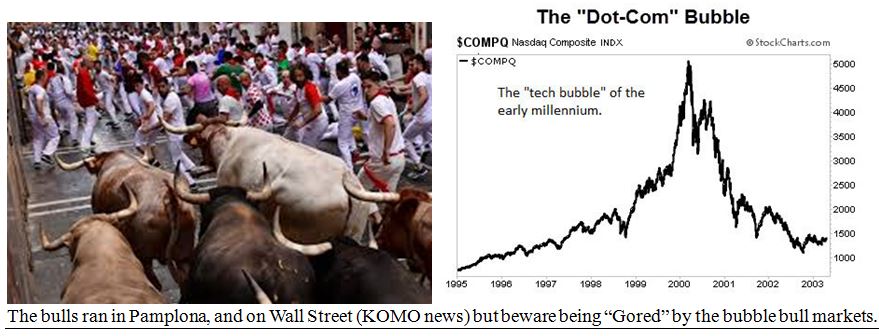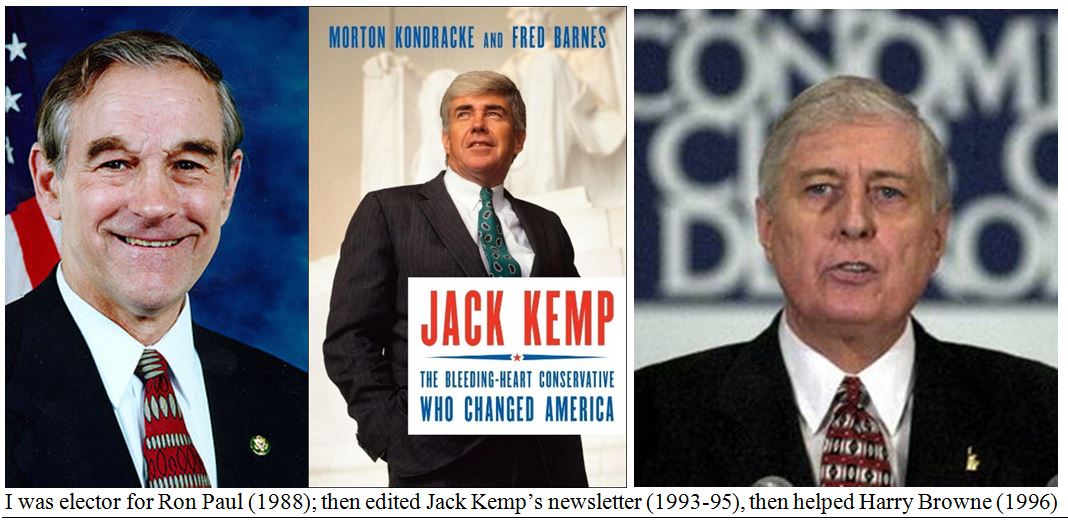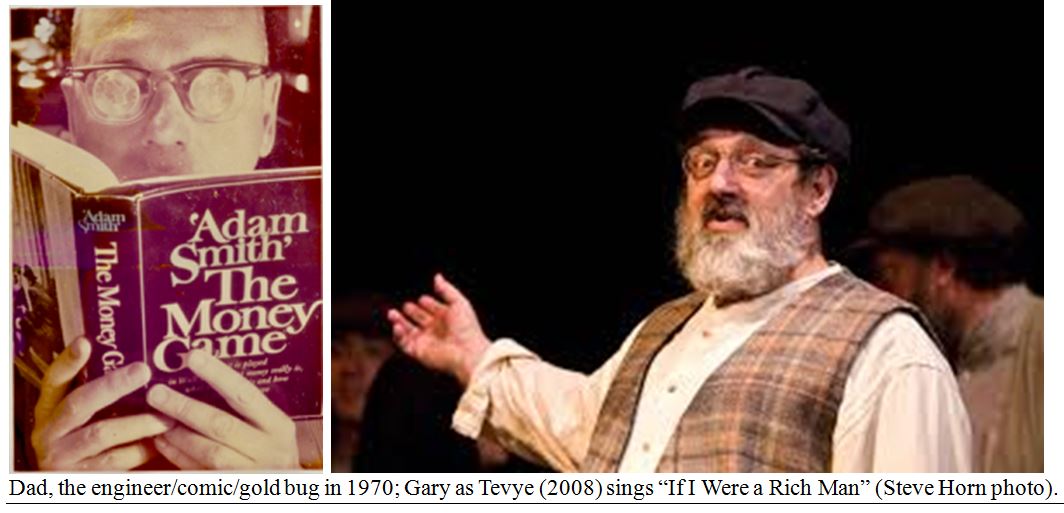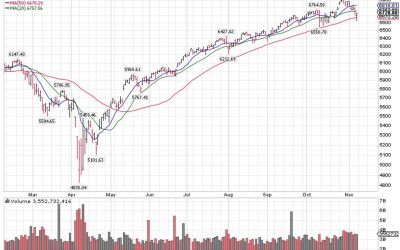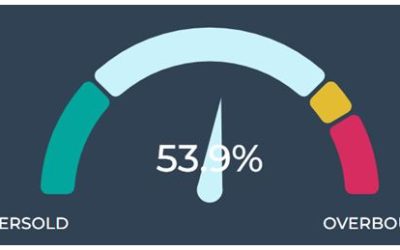by Gary Alexander
July 22, 2025
Last week, on my 80th birthday, I offered five investment lessons from the first half of my life, when the S&P rose 1,245%, but the market did much better in my second 40 years, up over 30-fold since I began to invest in stocks in the late 1980s. As this table shows, the S&P is up over 420-fold in my lifetime, not counting dividends or inflation, which tend to even out. Witness the benefits of a bullish outlook:
423-fold gains Since Mid-1945 (and 65-fold Gains Since 1975)
Graphs are for illustrative and discussion purposes only. Please read important disclosures at the end of this commentary.
Today, I’ll conclude with three more lessons from my 80-years – including 58-years of active research and writing about the markets – long before I was able to afford my first long-term investments in stocks.
Lesson #6: When the Bulls Run, There’s “Pamplona Power” on Wall Street
You never know when the market will rise or fall – or bore you to tears for years. From 1991 to 1995, the Dow did not make a move of 100 points on any single day for over four years, from November 15, 1991, through December 18, 1995. In four calendar years, 1992 to 1995, the Dow changed by 2% or more on only five of 1,000 (0.5%) of all trading days. Those markets seemed to be in a permanent siesta, but the market finally awoke to cash in on the “peace dividend” by hoovering up stocks in this Internet thing:
Graphs are for illustrative and discussion purposes only. Please read important disclosures at the end of this commentary.
As I discussed last week, I never really got into the market until 1989, but I was “all in” in a committed way, then in ups and downs. The early 1990s torpor didn’t concern me. In 1995, my dad let me manage his retirement account – he was mostly in bonds and gold – and I switched to stocks (with help from my affiliation with some great advisors) and found some superb gainers for both my dad and our family.
Clinton’s second term was a bonanza for stocks – as I wrote in my March 11 column. After the 1994 Republican Revolution, stocks soared, as “Pamplona Power” prevailed, and El Toro Grande roared.
Graphs are for illustrative and discussion purposes only. Please read important disclosures at the end of this commentary.
As the above chart shows, NASDAQ became a classic bubble, shooting up too far too fast, then falling to 5-year lows by early 2003. However, the more stable market indexes barely felt the blip of the flat 1970s and early 2000s, but longer-term (next chart), for each dollar invested in 1970, investors would now have about $140, although two long slumps from 1970 to 1982, and again from 2000 to 2009, seemed endless.
Graphs are for illustrative and discussion purposes only. Please read important disclosures at the end of this commentary.
Lesson #7: Be Part of the Solution (not a constant complainer) – and Have Fun Doing It!
A second big lesson from the 1990s was that capitalism crushed communism, big time – a trend that became clear after the surprise fall of the Berlin Wall in late 1989 (fueled in part by the Chinese protests in Tiananmen Square the previous June). All my adult life, I was an activist for freedom – the freedom of investors to gain access to markets long denied them, and political freedom. Maybe I went too far as a tax protestor and Constitutional advocate in the late 1970s through the early Reagan era, but after the Berlin Wall crumbled, I wanted to be part of the solution, first by editing a newsletter authored by the “bleeding-heart conservative” from Buffalo, Jack Kemp (before he ran for Vice-President in 1996). Then, I served on the finance committee of Libertarian presidential candidate, Harry Browne, one of my favorite authors.
Harry Browne had been living quietly at home, writing while listening to operas and classical music and complaining about big government, until his wife finally said, “Why don’t you quit complaining and run for President? Be part of the solution.” So, Harry studied up his platform and became a very effective speaker for liberty. In his campaign, I was still complaining about the federal debt and big government, so Harry asked me the same question his wife asked him, and I ran for Virginia State Delegate in 1997. I knew (even hoped) I would lose to a 10-time Democratic Party incumbent, but the process was a thrill, a chance to face questions and audiences of all ages and stripes – from high schools to 3-way TV debates.
At the same time, I gained proximity to other politicians and their policies and noticed a wonderful trend of both Parties talking peacefully together to create real solutions. (Yes, that once happened!) To his credit, President Clinton admitted the mistakes of his first term and said, “The era of big government is over” and “we must end welfare as we know it,” and he did…both. He and Speaker Newt Gingrich with a strong Republican bench in Congress crafted tax cuts, spending cuts and pro-business packages which delivered four straight budget surpluses, 1997-2001, something that had not been done for over 80 years.
(I told this story in more detail in my March 11 column, if you want to review that unprecedented era).
The pay-off is that I was able to chair some fascinating political panels over the next quarter century, first at the New Orleans Investment Conference (NOIC). I give thanks to Brien Lundin, conference director there after the passing of conference founder Jim Blanchard at age 55 in early 1999. Our panelists were usually a top Republican (conservative), a top Democrat (liberal) and a Libertarian. I have many great memories from those debates, as we were always animated, respectful and focused on core principles.
In parallel conferences, Mark and Jo Ann Skousen and I formed the “Freedom Fest Players” to bring American history alive, with stagings of selections from 1776, Camelot and the French Revolution with Franklin in Paris, with Mark as Ben Franklin, wife Jo Ann as Madame de Stael and me as John Adams:
Going beyond these historical events, I have always advocated citizens do their part to make this nation great, by helping those in need or starting a charity, not by relying on politicians of any stripe to do it all for them (“Ask not what your country can do for you, but what you can do for our country.” – JFK).
Lesson 8: “Know When to Hold ‘em, and When to Fold ‘em” – Kenny Rogers
Last year (2024) brought an end to my 45-year investment seminar career, as travel became too much of a hassle for these old bones. The 50th New Orleans conference was my 42nd and last, and the 2024 Freedom Fest was my last, too, but I learned a huge amount from nearly every speaker at both events, especially when I was on stage as moderator, asking tough questions to some of the sharpest minds in the business.
I’ll still go on writing, since that is second nature to me and the “perfect crime,” actually making money by sitting in my gorgeous island forest sharing my life of research with appreciative clients and investors.
As for any portfolio shifts, age 80 is the time to “grow it” while also “shrinking it,” through minimum annual distributions in our retirement accounts and yet still growing the portfolio by investing in growth stocks instead of the way octogenarians are supposed to behave, by clipping “bond coupons” for income.
So, perhaps this final lesson (#8) can morph into a rebuttal to a trio of typical investment shibboleths:
Lesson #8–Don’t mindlessly “invest your age,” especially if you know what you’re doing. Investment textbooks say you should subtract your age from 100 (that’s 20 for me) and only invest that much (20%) in stocks. The rest should be in bonds. Recently, I reluctantly upped my bond percentage to maybe 30%, but I refuse to go out to pasture. We didn’t see Warren Buffett or Charlie Munger slowing down after age 85. They kept investing in good stocks, in businesses they understood, rather than clip bond coupons.
Consider the times more than your age. Would it make sense to be 75% in stocks in 1929, if you were then age 25? No way. Would it make sense for my dad to be 20% in stocks and 80% in bonds at age 80 in a bull market? No way, so I put him in some growth stocks and his portfolio soared in the late 1990s. My Depression-era dad, who nearly starved in the 1930s, died a millionaire with a beatific smile on his face.
Lesson #9–Don’t chase glamour stocks and fads. I won’t name names, but I like to invest in businesses I understand and can champion their cause. I don’t like a lot of speculations in the small-cap arena – nor most of the established mega-cap (multi-trillion-dollar) giant glamour stocks. In general, I invest in mid-cap stocks – the Goldilocks size, for me – not too big or too small, well-established but with room to grow.
Lesson #10–Forget market timing. We’re not that smart. Don’t “Sell in May and go away,” or “Sell in July and wonder why.” Keep riding winners while maybe taking 50% of profits in a stock that soared too far too fast. Keep studying markets and human behavior but don’t try to pinpoint market tops or bottoms. The reversal is too fast and too vicious. You can’t easily exit a bear market at a good price. Neither would I chase a bubble by buying more at nosebleed levels. Let your winners run – until you need the money.
The best advice I can end with is: Keep making money – so you can invest more. If work is fun, why not?
Happy and successful investing – and thank you for enduring clips from my family albums along the way.
As Edward R. Murrow ended his shows, “Good Night and Good Luck.”
The post 7-22-25: More Investment Lessons after Nearly 60-Years in the Game (Part 2) appeared first on Navellier.






